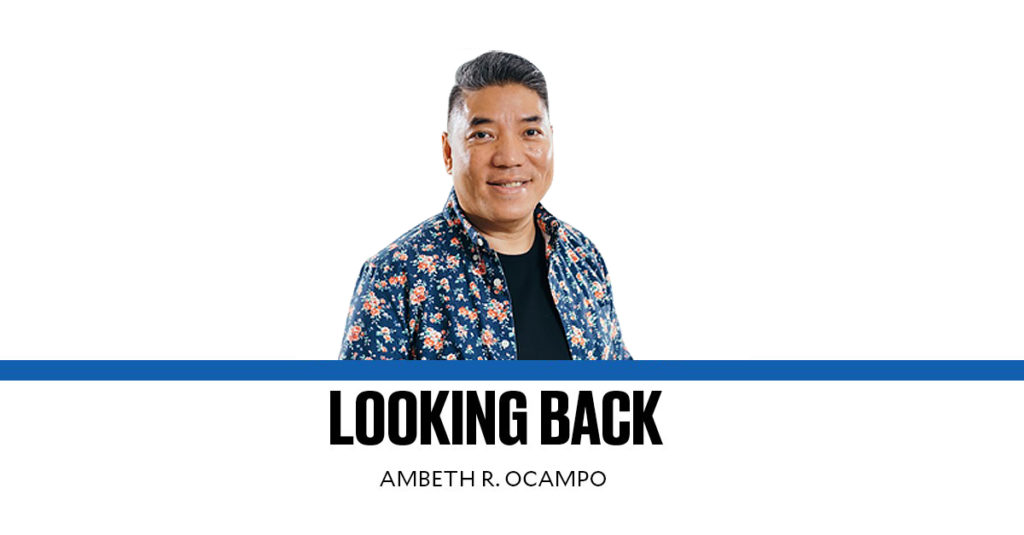Ann Arbor is said to be one of the best places to live in the US, except during the winter. Friends say I was foolish to accept the invitation as visiting professor at the University of Michigan (U-M), but then I looked beyond the subzero temperatures to the challenge of teaching outside my comfort zone. I accepted, knowing the long relationship between the University of Michigan and the Philippines having dipped into documentation on this tangled relationship 23 years ago on a Fulbright senior research fellowship. I worked on the thousands of archaeological artifacts (mostly Chinese ceramics) assembled and brought back by Carl Guthe, who headed the University of Michigan expedition based in Opon, Cebu, from 1922-1925. While the artifacts in the university museum tell of life and trade in the pre-Spanish Philippines, Guthe’s papers in the Bentley Historical Library tell another story. Beside the Bentley is the Gerald R. Ford Presidential Library, which surely contains correspondence and perhaps his impressions of Ferdinand Marcos Sr.
Days after my arrival, Jonathan Valdez of the U-M Center for Southeast Asian Studies took me to the U-M Law Library, built in the Tudor style, whose reading room could be mistaken as the set for a Harry Potter film. Stained glass windows above the shelves carry seals of different universities from around the world affiliated with the law school. One of these windows reads “University of the Philippines.” Miriam Defensor Santiago earned a degree here. Marcos Sr. was conferred an honorary doctorate in 1966. In gratitude, Marcos Sr. gifted the university library with a valuable set of John James Audubon’s “Birds of America,” with a dedication in his florid penmanship on the flyleaf.
Yesterday, Southeast Asia librarian Fe Susan Go (originally from Cebu) brought out some rare and interesting Philippine material from their special collections for show-and-tell. The eclectic selection underscored the wealth of material that is merely the tip of the proverbial iceberg. For early Philippine popular culture, there was a sampling of small books, on very brittle paper, published by the Libreria Martinez in the first two decades of the 20th century. These provided entertainment long before the smartphone and the internet were even a dream. Metrical romances in Tagalog brought readers to biblical and imaginary lands. “Patnubay ng Pagsinta” (Guide to Courtship) gave the inarticulate cheesy love letters to be copied and sent to a significant other. The appendix even contains the key to understanding the various signals a woman made to her beloved using her paño (handkerchief) and abanico (fan). Even the choice of flowers in an arrangement was a not-so-secret code.
What I found particularly intriguing were preserved in acid-free boxes, folders, and mylar sheets. A manuscript payroll book of the “Batallon Montalban 3a Zona, Manila” listed the names and status of over 600 men who fought in the Philippine-American War in June 1899. Here, one found the faded signature of Gen. Licerio Geronimo, whose sharpshooters took down US Gen. Henry Ware Lawton in 1901. Before his assignment in the Philippines, Lawton saw fire in the US “Indian Wars,” and was involved in the capture of the Apache chief Geronimo. Isn’t it uncanny that he died from a campaign against another Geronimo (Licerio)?
Emilio Aguinaldo is represented in the collection with a photograph, posing stiffly beside his second wife, Maria Agoncillo. In 1930, he authenticated a copy of the June 12, 1898 Declaration of Independence read from the window of his Kawit home by Ambrosio Rianzares Bautista. This document may not be the signed original, now preserved in the vault of the National Library of the Philippines, but it is a rare contemporary copy.
Though it is not my period of expertise or interest, the materials from the Japanese occupation and even the postwar campaign against Huks lie in wait to be accessed and studied. A lot of printed primary sources for Philippine history at the University of Michigan can be accessed online for free, but there is so much more—enough to last many lifetimes and dissertations.
Comments are welcome at aocampo@ateneo.edu
